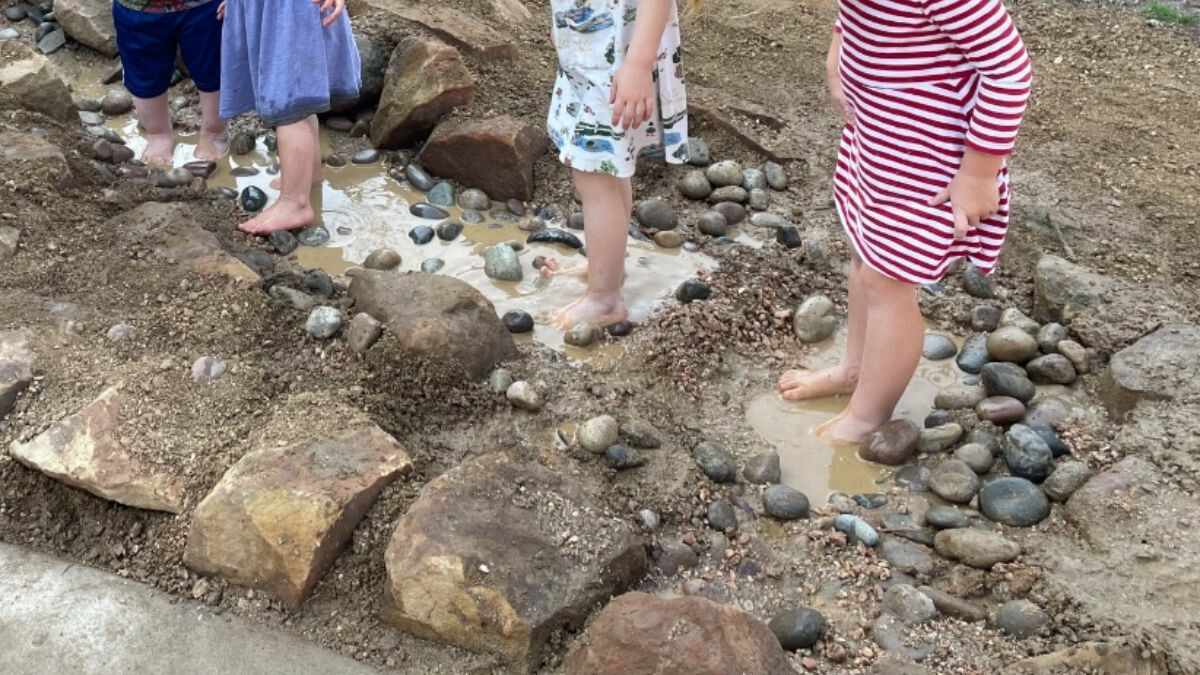Since 2005, Grace Garden Preschool has been a part of the Saint John’s community, serving children and families from the neighborhoods surrounding our church. Grace Garden has always been a place where play, especially outdoors, is a core value, not just an afterthought.
Recently, though, you may have noticed some changes on the Grace Garden playground as you arrive for worship, classes, or committee meetings. With the help of Green Space Learning and Development (and thanks to funding from the Child Care Relief Grant we received last year), we were able to plan and implement an exciting refresh for our play space, including many natural elements like logs, small rocks and boulders, cedar bridges and “loose parts” building materials, and a working water pump which flows into a very realistic looking (and feeling!) riverbed.
Why was the inclusion of natural elements so important to us when imagining our perfect play space? In his book, The Last Child in the Woods, author Richard Louv introduces the concept of Nature Deficit Disorder. Though not an actual, diagnosable disorder, Louv coined the term to describe the reality that humans, especially children, are spending less and less time outdoors, furthering their disconnection from nature.
Although it’s easy to point to electronics and screens as the culprit, it’s also true that green space is shrinking in many areas, making it harder for people to easily access nature. Furthermore, some parents and caretakers of children might view natural play as too messy or too risky and may even unconsciously steer their children away from it in favor of safer, more contained play environments.
This lack of access to the natural world reveals an enormous problem: Without the opportunity to spend time in nature, how does one grow to love it? And without having a deep love for it, why would anyone be motivated to care for it? Truly, as we face the certain challenge of climate change now and in the coming years, the importance of raising a generation of Earth stewards becomes even more apparent.
Louv writes, “Passion is lifted from the earth itself by the muddy hands of the young; it travels along grass-stained sleeves to the heart. If we are going to save environmentalism and the environment, we must also save an endangered indicator species: the child in nature.”
For the past several years, Grace Garden Sunday has been celebrated on Creation Sunday; this year, the connection between the two feels even more relevant. For the children in our care, it is their birthright to feel at home in nature, to feel the roughness of tree bark with their hands, and to feel the squishiness of mud with their bare feet. They deserve to walk carefully on wet river rocks and make mud pies decorated with leaves and pebbles. Through these experiences, they will enhance their understanding of, and love of, the natural world. After all, as author and naturalist David Sobel reminds us, “If we want children to flourish, to become truly empowered, let us allow them to love the earth before we ask them to save it.”
Looking forward,
Katie




